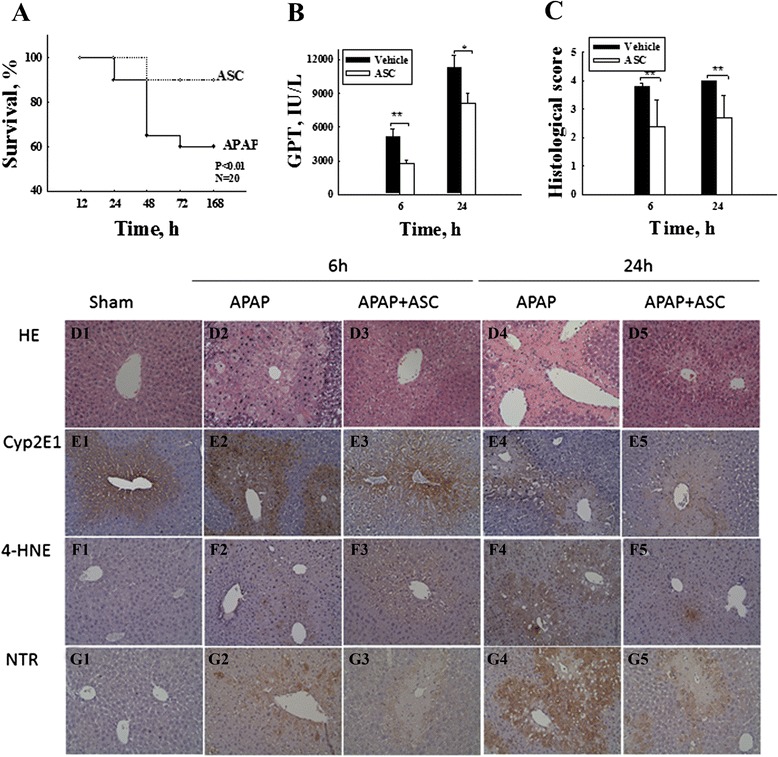Fig. 2.

Omentum-derived ASCs prevent APAP-induced hepatotoxicity. Omentum-derived ASCs were transplanted into mice with acute liver failure that had been induced by APAP (600 mg/kg, i.p.). Mouse omentum-derived ASC transplantation significantly improved the survival rate for mice with acute liver failure (n = 20 in each group) (a) and significantly decreased the liver damage caused by APAP according to both the serum liver enzyme (GPT) levels (b) and the tissue histological grade (c). The data are expressed as the means ± SEM, n ≥ 5, *P < 0.05, **P < 0.01. (D) H&E staining shows that APAP caused severe centrilobular necrosis (D2: 6 h after APAP; D4: 24 h after APAP). Omentum-derived ASC transplantation decreased the severity of liver damage caused by APAP (D3: 6 h after APAP + omentum-derived ASC treatment; D5: 24 h after APAP + omentum-derived ASC treatment). Immunohistological staining shows that APAP treatment induced the expression of CYP2E1 (E2-E5), 4-HNE (F2-F5), and NTR (G2-G5), which were suppressed after omentum-derived ASC transplantation. CYP2E1: cytochrome P450 2E1; 4-HNE: 4-hydroxynonenal; and NTR: nitrotyrosine. Magnification, 200x
